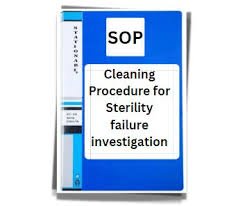SOP for Failure Investigation

SOP for Failure Investigation in Pharmaceutical Manufacturing
Here’s an overview of the Standard Operating Procedure (SOP) for Failure Investigation in pharmaceutical manufacturing, focusing on identifying root causes, implementing corrective and preventive actions (CAPA), and ensuring compliance with Good Manufacturing Practices (GMP).
1. Objective
To establish a systematic approach for investigating product or process failures that do not meet predefined specifications, ensuring identification of root causes and implementation of corrective and preventive actions to prevent recurrence.
2. Scope
This SOP applies to all departments involved in the manufacturing process, including Production, Quality Control (QC), Quality Assurance (QA), Engineering, and Research & Development (R&D). It encompasses failures related to raw materials, equipment, processes, and finished products.
3. Responsibilities
-
Initiator: Department personnel identifying the failure.
-
Department Head: Oversees the investigation process within their department.
-
QA Department: Maintains records, assigns investigation numbers, and ensures compliance.
-
Management: Reviews and approves corrective and preventive actions.
4. Procedure
4.1 Identification and Reporting
-
Immediate Action: Upon detecting a failure, the initiator must report it to their department head and QA.
-
Documentation: Complete the Failure Investigation Report (FIR) form, detailing the nature of the failure, affected batch details, and initial observations.
4.2 Investigation Process
-
Document Review: Examine relevant documents such as:
-
Batch Manufacturing Records (BMR)
-
Analytical data
-
Equipment logs
-
Cleaning records
-
Calibration records
-
-
Root Cause Analysis: Utilize tools like the 5 Whys or Fishbone Diagram to identify the underlying cause of the failure.
-
Impact Assessment: Determine the impact on the affected batch, other batches, and overall product quality.
4.3 Corrective and Preventive Actions (CAPA)
-
Corrective Actions: Implement immediate actions to address the identified root cause.
-
Preventive Actions: Develop strategies to prevent recurrence, such as process modifications, training, or equipment upgrades.
-
Approval: CAPA plans must be reviewed and approved by relevant authorities before implementation.
4.4 Documentation and Reporting
-
Investigation Report: Compile a comprehensive report summarizing the investigation, findings, and CAPA plans.
-
Record Keeping: Maintain records of all investigations and actions taken for future reference and audits.
4.5 Follow-up and Monitoring
-
Effectiveness Check: Monitor the effectiveness of implemented CAPA to ensure the failure does not recur.
-
Review: Conduct periodic reviews of failure investigations to identify trends and areas for improvement.
5. References
🎓 Discover one of the best Pharmaceutical Production courses available — click below to explore the course that’s shaping future Production skills.

